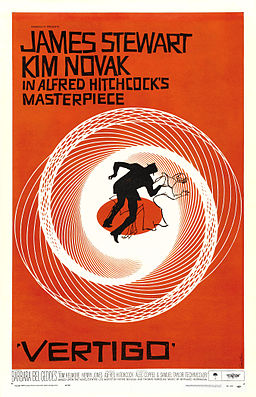Recreating the Vertigo poster
by John from John D. Cook on (#2CQB6)
In his new book The Perfect Shape, iyvind Hammer shows how to create a graph something like the poster for Alfred Hitchcock's movie Vertigo.

Hammer's code uses a statistical language called Past that I'd never heard of. Here's my interpretation of his code using Python.
import matplotlib.pyplot as plt from numpy import arange, sin, cos, exp i = arange(5000) x1 = 1.0*cos(i/10.0)*exp(-i/2500.0) y1 = 1.4*sin(i/10.0)*exp(-i/2500.0) d = 450.0 vx = cos(i/d)*x1 - sin(i/d)*y1 vy = sin(i/d)*x1 + cos(i/d)*y1 plt.plot(vx, vy, "k") h = max(vy) - min(vy) w = max(vx) - min(vx) plt.axes().set_aspect(w/h) plt.show()
This code produces what's called a harmonograph, related to the motion of a pendulum free to move in x and y directions:

It's not exactly the same as the movie poster, but it's definitely similar. If you find a way to modify the code to make it closer to the poster, leave a comment below.